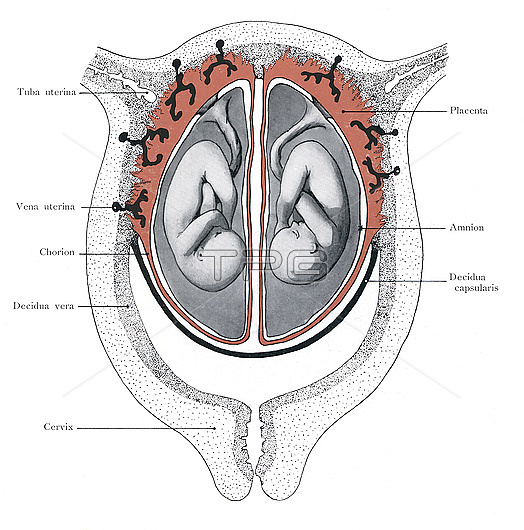
Twin foetuses in utero, illustration. These are dizygotic (DZ) twins that have developed from the fertilization of two ovulated oocytes which form two zygotes. DZ twins may be of the same sex or different sex. The adjacent placentas (red) may on occasion be in partial contact and function as a substitute for a single placenta. This occurs in about 40 percent of DZ twins. The foetuses shown have a common decidua (black border, part of the uterine lining) but separate chorions (red borders) and separate amniotic cavities (grey). From Kollmann, J. (1907) Handatlas der Entwicklungsgeschichte des Menschen, vol 1, Fig. 179. G. Fischer, Jena.
| px | px | dpi | = | cm | x | cm | = | MB |
Details
Creative#:
TOP28610453
Source:
達志影像
Authorization Type:
RM
Release Information:
須由TPG 完整授權
Model Release:
n/a
Property Release:
n/a
Right to Privacy:
No
Same folder images:

 Loading
Loading